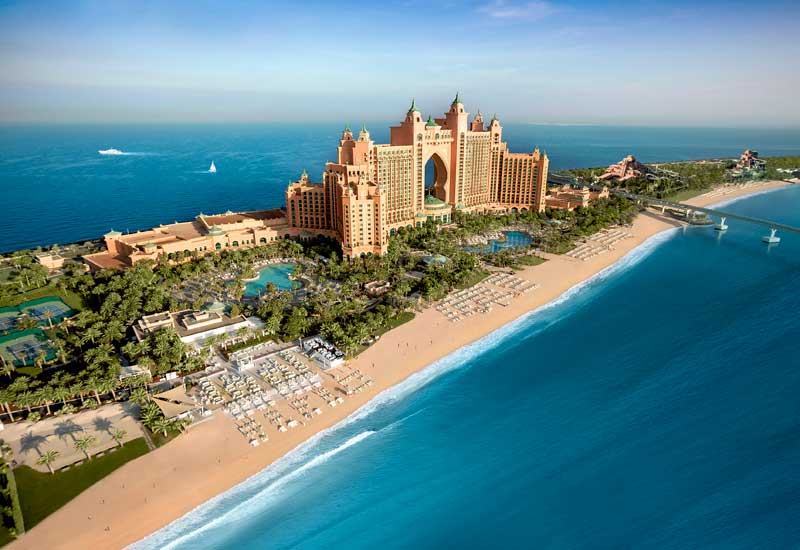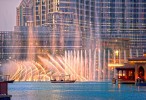In what looks like the first for the EMEA region, Atlantis, The Palm is launching a ‘Social TV’ channel for guest rooms, which will merge video content and user-generated content (UGC) to influence consumer spend within the resort. The content will be shown across various mediums, including in-room TV channels, resort display screens and the Atlantis website.
Speaking to Hotelier Middle East, Atlantis, The Palm SVP sales, marketing & PR Ravini Perera says: “Atlantis is aware of the value of the user-generated content created by the millions of guests that visit the resort each year.”
She explains that according to research, UGC is 35% more memorable than other sources and that most demographics trust UGC 50% more than traditional media.
“We therefore recognised the importance of working with a platform that connected with our customers’ visual content and enabled us to channel it onto our own mediums. Tint’s personalisation tool also allowed us the flexibility to design a look and feel that complemented our brand identity.”

| Advertisement |
Tint Middle East director Andrew Burgess explains the collaboration further. “Tint is a content marketing platform that allows brands to source authentic, user-generated content to then display it dynamically into any digital platforms. This allows Atlantis, The Palm to showcase all of the content that customers post online on social media channels, through hashtags and location based check-ins, along with other sources such as TripAdvisor, RSS feeds and more.”
Burgess notes that there is a lot of marketing potential in leveraging all the content Atlantis’ customers create on a daily basis. He explains: “Review websites, such as TripAdvisor, have proven in recent years that consumers are far more likely to make purchasing decisions based on what they read from their peers, over what a marketing department can tell them. Tint is fulfilling this need by bringing all of this content directly into Atlantis, The Palm’s digital channels, i.e. its website and screens in guest rooms. Atlantis, The Palm also has full control over what content is displayed on these digital channels, by moderating and approving only the best content created by its customers.”
Certainly, a survey from PR agency BPG Cohn & Wolfe revealed in August 2016 that 71% of UAE residents will take advice from social media influencers before buying products. Food, an important revenue source for a hotel, was one of the areas where residents are most likely to turn to leading social media influencers for recommendations, according to the results of the research undertaken for the agency by YouGov, who interviewed 1,000 men and women across the country.
Installing Tint’s software and working with the existing IT systems was relatively easy, confirms Perera. “The installation process requires that you take a live screen capture of the URL (in this case tintup.com) and then stream it across our mediums; it was just a case of ensuring compatibility with our systems,” she adds.
Burgess gets more technical. He explains that to display the UGC, a simple HTML code is generated by Tint, which is then inserted into an iframe on the site. Building a Tint, creating the iframe and inserting the HTML code can all be completed in less than one hour. For digital screens around the property, Tint generates a URL which was then inserted into Atlantis, The Palm’s digital signage system to create a new channel where this can be displayed.
“A challenge that we faced, for the IPTV distribution, was that the system was not set up to accept a URL, as is the case with most of these systems, but Tint was able to source a decoder which allowed for this to be overcome and the content to be sent out to TV’s in guest rooms,” Burgess reveals.
Perera hopes that by harnessing the power of UGC, the resort can expect a deeper level of engagement with its guests and potential visitors — that will in turn deliver positive financial results. She says: “For example, by using visible and customisable call to actions in the purchase path of potential guests, we are aiming to increase conversions. In addition we expect our website statistics to improve, with UGC generally increasing the amount of time consumers spend on a site and the amount of times they repeat visit.
“We also look forward to the brand advocacy that the UGC will deliver on, which subsequently should inspire guests and potential visitors to see and do as much as possible on their visits, essentially upselling everything that the resort has to offer.”
Confirming that showcasing UGC, with call to action buttons, on a hospitality website helps drive behaviour, Burgess concludes: “Whether this is to book a room, booking dining or other resort experiences, potential customers online are more likely to take action when they can view peer experiences without having to leave a website.
“Displaying up-to-date user-generated content on screens around the property helps influence consumer spend within the resort, and again, it is this authenticity of content created by peers that helps drive this action.”










 Search our database of more than 2,700 industry companies
Search our database of more than 2,700 industry companies









